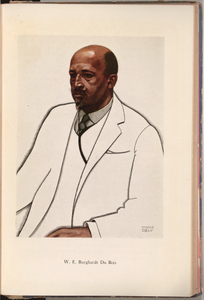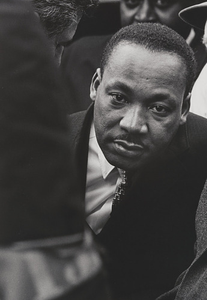Description
Walter White headed the National Association for the Advancement of Colored People (NAACP) from 1931 to 1955. During these difficult years, he directed an unsuccessful struggle for an anti-lynching bill and implemented a highly successful long-range campaign of legal actions, culminating in the 1954 Supreme Court decision outlawing discrimination in the nation's schools. White's tenure at the NAACP saw it through the Great Depression, when membership and donations declined precipitously and it faced a strong challenge from the Communist Party-USA, which actively competed for African American members. After World War II and during the beginnings of the Cold War, White remained a staunch anti-Communist and stressed the need for racial justice in America, to compete with the Soviets in winning Third World allies. Due in part to White's urging, Harry Truman ran on a civil rights platform in the 1948 presidential election.The Harmon Foundation, a philanthropic organization based in New York City and active from (1922-1967) included this portrait in their exhibition “Portraits of Outstanding Americans of Negro Origins” which documented noteworthy African Americans’ contributions to the country. Modeling their goal of social equality, the Harmon sought portraits from an African-American artist, Laura Wheeler Waring and Euro-American artist, Betsy Graves Reyneau. The two painters followed the conventional codes of academic portraiture, seeking to convey their sitters extraordinary accomplishments. This painting, along with a variety of educational materials, toured nation-wide for ten years serving as a visual rebuttal to racism.Harmon Foundation; gift 1967 to NPG.
Image
Oil On Canvas
National Portrait Gallery, Smithsonian Institution; gift of the Harmon Foundation
Record Contributed By
National Portrait GalleryRecord Harvested From
Smithsonian InstitutionKeywords
- Activist
- Activists
- Cigarette
- Civil Rights
- Civil Rights Activist
- Civil Rights Leader
- Costume
- Document
- Dress Accessories
- Dress Accessory
- Equipment
- Eyeglasses
- Facial Hair
- Government
- Handkerchief
- Historical
- History
- Literature
- Male
- Men
- Mustache
- Mustaches
- Necktie
- Neckties
- Novelist
- Novelists
- Personal Attribute
- Politics
- Politics And Government
- Portrait
- Portraits
- Printed Material
- Public Official
- Reformer
- Reformers
- Reyneau, Betsy Graves
- Smoking Implements
- Society And Social Change
- Tie
- Walter Francis White
- White, Walter Francis
- Writer
- Writers





















